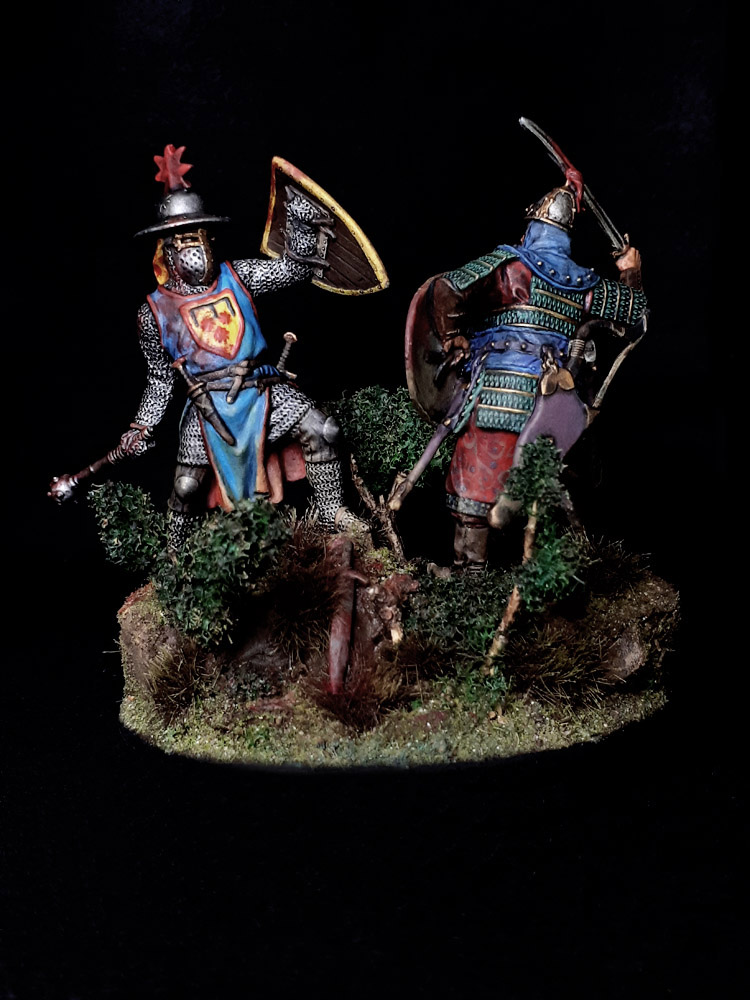
The Battle of Legnica, was a battle between the Mongol Empire and combined European forces that took place at the village of Legnickie Pole (Wahlstatt), approximately 10 kilometres southeast of the city of Legnica in the Duchy of Silesia on 9 April 1241.
Due to issues and a diplomacy breakdown with The Kingdom of Hungary, Batu Khan and Subutai began planning a Mongol invasion of Europe. Batu and Subutai were to lead two armies to attack Hungary itself, while a third under Baidar, Orda Khan and Kadan would attack Poland as a diversion to occupy European forces which might come to Hungary’s aid.
A combined force of Poles and Moravians under the command of Duke Henry II the Pious of Silesia, supported by feudal nobility and a few knights from military orders, tried to halt the Mongol invasion of Poland. The battle took place two days before the Mongol victory over the Hungarians at the much larger Battle of Mohi.
Henry’s force numbered no more than 25,000 troops, including large numbers of untrained and poorly equipped men. The inferior trained forces included an army from Opole under Duke Mieszko II the Fat, Moravians led by Boleslav, son of the Margrave of Moravia Děpolt III and conscripts from Greater Poland with volunteer Bavarian miners from the town of Goldberg. Henry’s better trained troops were from his Silesian realm, mercenaries, and very small contingents of French Knights Templar and other foreign volunteers.
Current estimates suggest the Mongol force led by Baidar and Kadan numbered at most, 25,000 cavalry. The Mongol commander found the highest ground at the battle site, seized it and used it to communicate to his commanders their orders for troop movement. The Mongol system was in stark contrast to the European system, in which knights advanced with basically no communication with supporting forces.
The Silesian’s initiated combat with the vanguard of the Mongol army. After the Silesians were repelled, the cavalry of Greater Poland, led by Sulisław, and the cavalry of Opole then attacked the Mongols. The Mongols had success in the battle by feigning their retreat. After the Polish knights detached from the main body of allied forces in pursuit of the fleeing Mongols, the invaders were able to separate the knights from the infantry and defeat them one by one.
The army of Henry II was almost destroyed. Henry and Boleslav of Moravia were killed and estimates of casualties were huge, essentially the entire army. The Mongols cut the right ear off of each fallen European in order to count the dead, apparently they filled nine sackfuls, though the validity of this account is unsure.
Henry was struck down and beheaded while attempting to flee the battlefield with three bodyguards, and the Mongols paraded his head on a spear before the town of Legnica.
Upon learning of the defeat Wenceslaus I of Bohemia, who was a day’s march away, fell back to gather reinforcements from Thuringia and Saxony. He was overtaken by the Mongol vanguard at Kłodzko. His force was far larger and more powerful than the European army at Legnica, and the Mongol detachment was routed.
As Baidar and Kadan’s orders had been to serve as a diversion, they still lingered to keep the Bohemian forces tied up, avoiding a confrontation with the larger army, by splitting up into bands and sacking minor towns and villages. Eventually, they turned away from Bohemia and Poland and headed southward to join Batu and Subutai, who had defeated the Hungarians at the Battle of Mohi.
